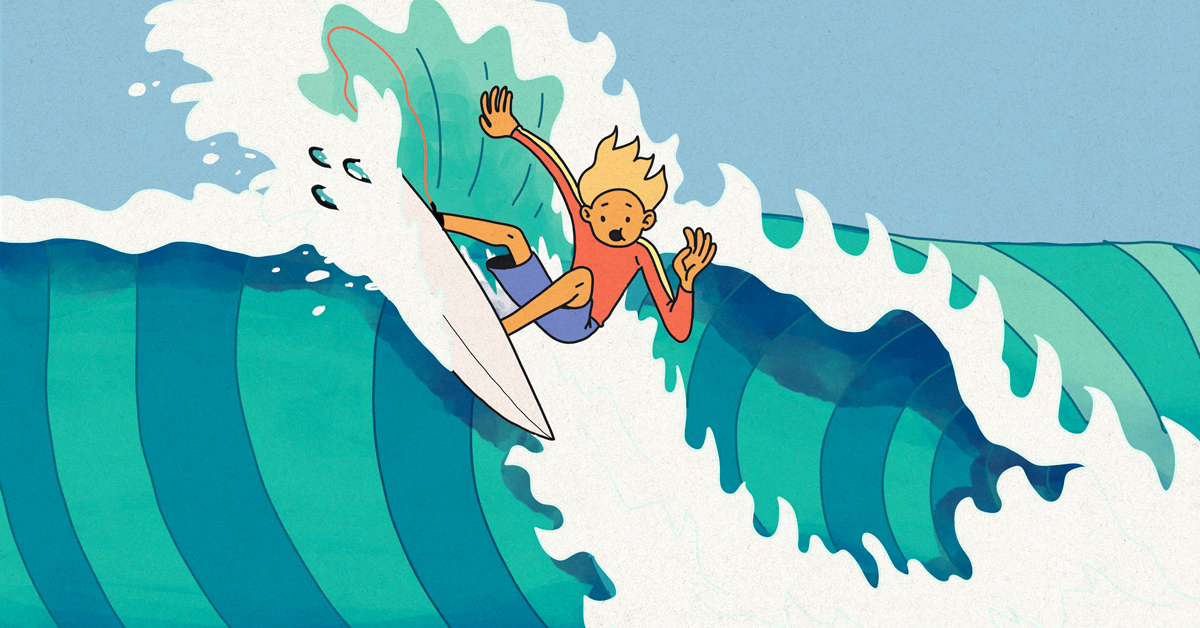
GOOD SURFER
Surf safety & etiquette
Our surf breaks represent some of the best and most easily accessible surf amenity in the world. As a result, they attract a high number of local and visiting users with various skill levels who are sometimes unfamiliar with the local surf etiquette.
Acknowledging that our recreational surfing population continues to increase and diversify reinforces the need for ongoing education for ocean users regarding correct surf safety and etiquette customs. ‘Good Surfer’ surf safety and etiquette content has been developed to educate ocean users (local and visiting) on correct surf safety and etiquette behaviour, to help ensure that everyone can enjoy a beach experience.
Watch these surf safety videos to learn more.
Choosing the right location and equipment to suit your ability helps everyone stay safe in the water.
- Beginner surfers are encouraged to enrol in professional lessons run by a licenced surf school.
- Small, spilling waves are best suited to beginner surfers.
- Study conditions before you surf – every surf environment is dynamic and constantly changing.
- Choosing a surfboard relevant to your skill level can help you to fast track your surfing development.
- Beginner surfers are encouraged to use soft-top surfboards which are perfect for buoyancy, stability and safety.
- Whether you’re a beginner, intermediate or advanced surfer, always remember – if in doubt, don’t paddle out.
Board Control and Use of Leg Rope
- Always wear a leg rope. You never have permission to throw or discard your board. Stray surfboards can cause serious harm to others.
- If you’re not confident that you can properly manage your board, you should go back to surfing smaller waves and working on the basics.
- When in the shallows, hold your board with both hands at your side perpendicular to the waves.
- Never paddle directly behind anyone. Accidents do happen and surfers do lose control of their board for reasons beyond their control.
- If you do fall off or lose control of your board, locate it as soon as safely possible.
- Never turn your back on the sea – always watch for conditions such as waves and wind power that turn surfboards into dangerous missiles.
Dropping In
The act of ‘dropping in’ arises when a surfer already travelling along a wave has their path obstructed by another surfer who joins the wave. It’s generally accidental behaviour, but it’s widely considered disrespectful, dangerous and can contribute to incidents of conflict. You can limit the chances of ‘dropping in’ by remembering the following etiquette:
- The ‘peak’ is the highest point of a wave – the part that breaks first.
- The surfer closest to the peak has right of way.
- Look to the peak as you paddle for a wave.
- Do not attempt to catch or ride a wave if there is a surfer closer to the peak who is paddling and committed to taking off.
- If you’re closest to the peak, communicate your intent and always take notice of what is going on around you.
- If you accidentally drop in on someone, immediately apologise by giving a wave or saying sorry.
- Try to steer off the back of the wave – minimising any disturbance to the wave face which might hinder the surfer with priority
Snaking
Snaking’ occurs when a surfer paddles around other surfers to take the inside position closest to the peak. It’s surfing’s equivalent of jumping the queue. Most surfers wait patiently and quietly for a wave, so snaking is considered greedy, inconsiderate and can often ruin a positive atmosphere in the water.
- You can limit the chances of snaking by remembering the following etiquette:
- If a surfer has stood up and is riding a wave but drifts away from the most critical part of the wave (called the pocket) and is surfing the open face, it is still their wave. It does not mean that another surfer can then paddle on their inside and take off closer to the peak.
- It is also considered poor behaviour to ride a wave and paddle straight back out past everyone to take the inside position again.
- Be aware that dependent on the location you’re surfing, there might be a rotation system in place that all surfers are abiding by.
- Reading conditions and positioning yourself correctly to be in the right spot to take waves comes from time and experience in the ocean.
- Respect that not everybody has the same board or skill level as you.
- Let the other surfer go especially if you’ve just ridden a great wave. Good things come to those who wait…
Paddling and Positioning
One of the most nerve-racking scenarios any developing surfer will ever face is understanding exactly where to paddle out and the correct positioning; knowing the difference between a good and bad wave, when to paddle for it, how to catch it and how to navigate other surfers, all whilst respecting surf etiquette.
- You can limit the chances of collision or confrontation by remembering the following:
- Don’t paddle straight into the active wave zone of the break – instead, watch conditions for 10 minutes, observe experienced surfers and note their paddle lines and how they are getting out to the wave zone.
- Where possible, paddle out through a channel or rip and then parallel to the beach.
- If ‘caught inside’ the beach side of an incoming wave or set of waves, aim for the whitewash of the wave – leaving the wave pocket and shoulder undisturbed for the surfer up and riding.
- Do not under any circumstance paddle in front of another surfer riding a wave unless you’re well clear of their direction.
- The surfer closest to the wave peak has the right of way – if this surfer falls off, priority then falls to the next surfer located closest to the peak.
- When it’s your turn to take off, communicate your intent to those surfers around you.
- Only take off if it’s safe to do so but remember that hesitation is dangerous – whether you’re paddling to get out of the way or to catch a wave, be deliberate in your commitment and actions.
- Do not ‘drop in’.
- In split peak scenarios where surfers take off at the same time in different directions (one surfer goes left, one surfer goes right). Surfers must clearly communicate their intended direction.
Beware of Other Craft
Coastal bars are shallow, shifting sandbanks located at the entrance to rivers and coastal estuaries. Powered watercrafts navigate coastal bars to access or reach shelter from open waters.
The following tips are designed to help surfers avoid collisions which could result in serious injury or death:
- Coastal bars are dynamic environments where currents, swell, wind and weather conditions can change quickly and without warning.
- Prior to paddling across a bar with breaking waves, it is important to observe conditions for at least 10 minutes.
- Strong outflowing tidal currents can cause waves to become steeper, higher and more likely to break aggressively.
- Early morning and afternoon light can obscure or blind the vision of powered watercraft operators.
- Never assume that operators of powered watercraft can see you. Instead, take necessary precautions to avoid collisions.
- Once you start paddling, don’t stop or stay idle.
- Pay attention to your surrounds and remain vigilant.
- If you anticipate a collision, raise your voice, wave your arms and take any precautionary measures necessary to draw attention to your position.
Tow Surfing
Tow surfing is defined by any recreational power craft or personal watercraft (PWC) being used in connection with aquatic equipment in or near a surf zone.
- The Gold Coast has the greatest concentration of tow surfing activity in Queensland – making the following etiquette paramount to the safety of all ocean beach users:
- The City Chief Lifeguard is responsible for the closure of the bathing reserve to users on observation of unsafe conditions.
- The use of a recreational power craft vessel for tow surfing or power-assisted surfing is allowed when: a) The beach is closed due to extreme weather conditions; and is b) Not operated within 200 metres of any aquatic equipment, wind powered craft or swimmers.
- Provisions for PWC giving way to other ocean users in the surf zone includes: a) Surfers stepping off PWCs giving way to all paddle surfers. b) PWC vessel masters preventing the interaction of their wake with the surf zone.
- Safe distance laws are imposed to promote the safe operation of vessels when operating near other vessels, infrastructure or persons in the water.
- Tow surfing enthusiasts are encouraged to read the Maritime Safety Queensland tow surfing code of conduct.

